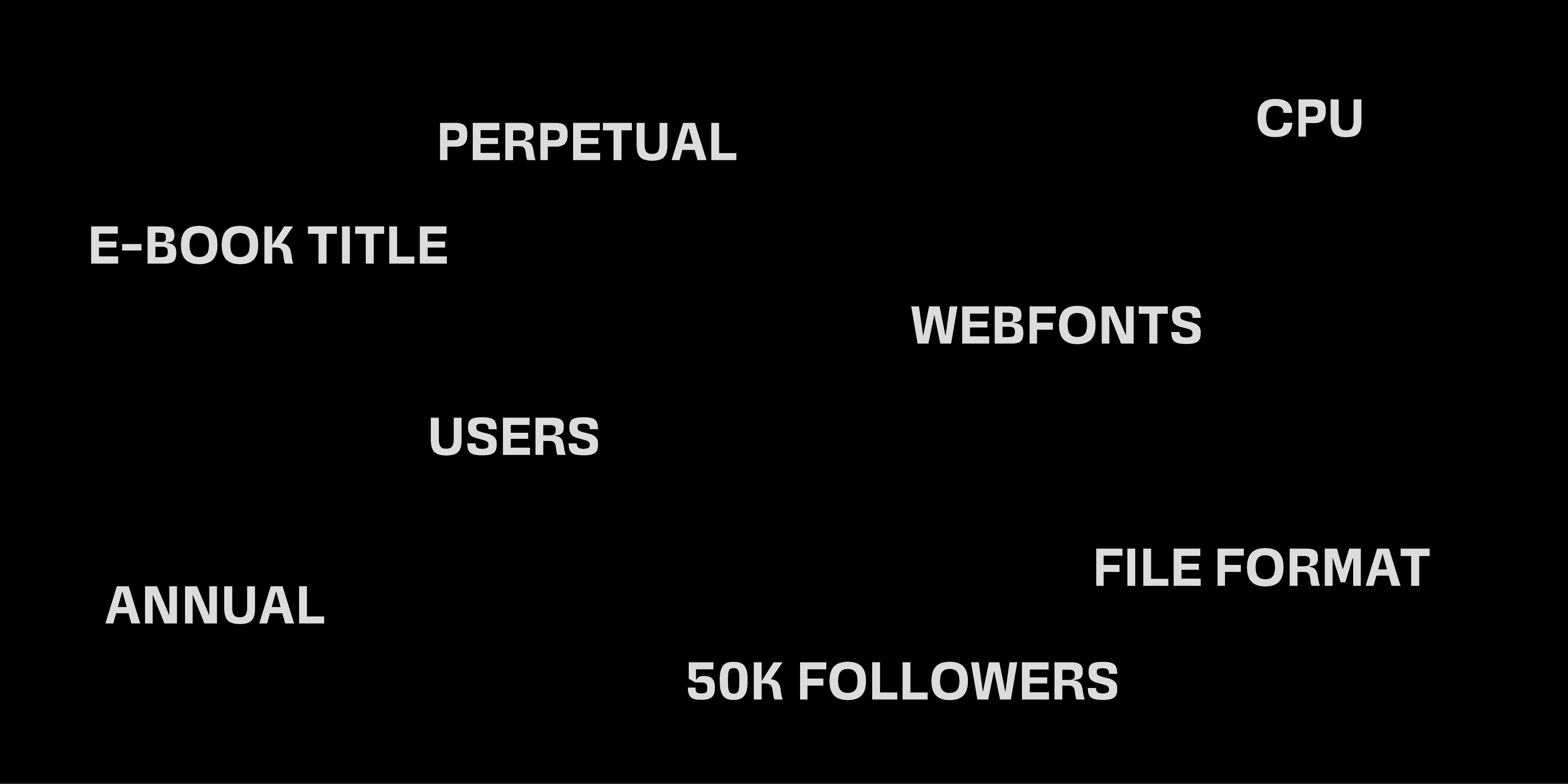Everything You Need to Know about Font Licensing
Font licensing is crucial for ensuring that your design projects run smoothly, but it can often be confusing. Whether you’re designing a logo, creating an app, or building a website, selecting the right font license is essential. Here’s a breakdown of common questions and concerns related to font licensing to help you navigate this process with confidence.
Common Questions About Font Licensing
What Does a Font License Cover?
A font license specifies how and where you can use a font. Some licenses are for personal use, while others allow for commercial use. It's also important to check if the license is perpetual (a one-time purchase, like the desktop license) or if it needs renewal. If you're unsure about any details, don’t hesitate to ask the vendor for clarification.
How Many Users Can Use a Font License?
Many font licenses specify the number of users or devices allowed. For example, if you have 10 designers on your team but your license only covers 5 users, you’ll need to upgrade. Keep track of your team size to ensure compliance and avoid licensing issues.
Can I Use a Font on My Website?
Webfont licenses are different from desktop licenses and depend on factors like monthly page views or website traffic. Make sure you understand the terms before embedding fonts on your website.
Are There Restrictions on Font Embedding?
Embedding fonts in apps, e-books, or PDFs usually requires a specific font license. This is an important consideration for digital products, so make sure you're aware of the terms to avoid unintentional non-compliance.
What Happens if I Don’t Comply with Font Licensing?
Failure to comply with font licensing terms can result in legal actions, fines, or damage to your brand’s reputation. Staying on top of your licenses and reaching out for assistance when needed will help you avoid these issues.
Types of Font Licenses You Should Know
Font licenses come in a variety of types, each designed for specific uses. Here’s a breakdown of the most common font licenses:
Non-Commercial Licenses
These licenses are perfect for personal or educational projects where no commercial use is involved. If you’re creating for personal use or testing, this license is ideal.
Desktop Graphic Print Licenses
These licenses allow you to install fonts on your computer for print design and graphic projects, such as posters, brochures, and logos.
WebFont Self-Hosted Licenses
If you're hosting fonts on your own server for use on a website, this license is required. Pay attention to any traffic or page view limits as part of your agreement.
Social Media & Reels Licenses
If your designs are for platforms like Instagram, TikTok, or Facebook, this license allows you to use fonts for posts, reels, or video content.
ePub, eDocs, eBooks, and PDF Licenses
This license covers the use of fonts in digital documents, including eBooks, PDFs, and other downloadable files. Some licenses may limit the number of copies or distribution.
Mobile App Licenses
If you plan to use fonts in an app, this license is necessary. It usually depends on the number of app downloads or active users, so plan accordingly.
Digital Ad, Email, and Banner Licenses
For fonts used in digital ads, email campaigns, and banners, this license is tailored for online promotions, with terms based on impressions or distribution limits.
Broadcast Titles and Credits Licenses
Fonts used in video productions—like titles or credits in TV shows, films, or online videos—require this specialized license.
Server Licenses
If you are hosting fonts on a server for dynamic content generation (e.g., websites or apps), a server license is needed. These licenses are often billed based on user numbers or content volume.
Enterprise Licenses
Enterprise licenses are designed for large organizations. They provide broad permissions across multiple users, locations, and platforms, making them ideal for companies with large teams.
Font Subscriptions: What You Should Know
Font subscription services, such as Adobe Creative Cloud or Monotype Fonts, give you access to a wide selection of fonts under a single plan. While convenient, be aware that these subscriptions typically cover **only** desktop and web use. Additional licenses may be necessary for embedding fonts in apps, e-books, or digital video content. Always check the service terms to ensure they meet your project needs, and reach out to the provider if you need additional licensing. Downloading a web font from Adobe Fonts and installing it on your website is not permitted.
Tips for Navigating Font Licensing
Read the License Agreement Carefully
While it may feel tedious, reading the full license agreement will save you headaches later. If anything is unclear, don't hesitate to ask the font vendor for clarification.
Assess Your Needs Early
Identify how you plan to use the font early in your design process. Will it be used for print, web, or mobile apps? Understanding your needs upfront will guide your license selection.
Stick with Reputable Font Vendors
Choose well-established foundries and vendors with clear licensing terms and excellent customer support. This will reduce the risk of licensing issues down the road.
Keep Your License Records Organized
Always save copies of your font licenses and purchase receipts. These records can be invaluable if you’re ever audited or need to verify your licensing status.
Conclusion: Mastering Font Licensing for Your Projects
Font licensing doesn’t have to be overwhelming. By understanding the different types of licenses, reviewing terms carefully, and keeping your records organized, you can ensure your projects remain compliant and stress-free. Whether you’re a solo designer or part of a large team, taking the time to get the right license will allow you to focus on creating amazing work without legal concerns.
